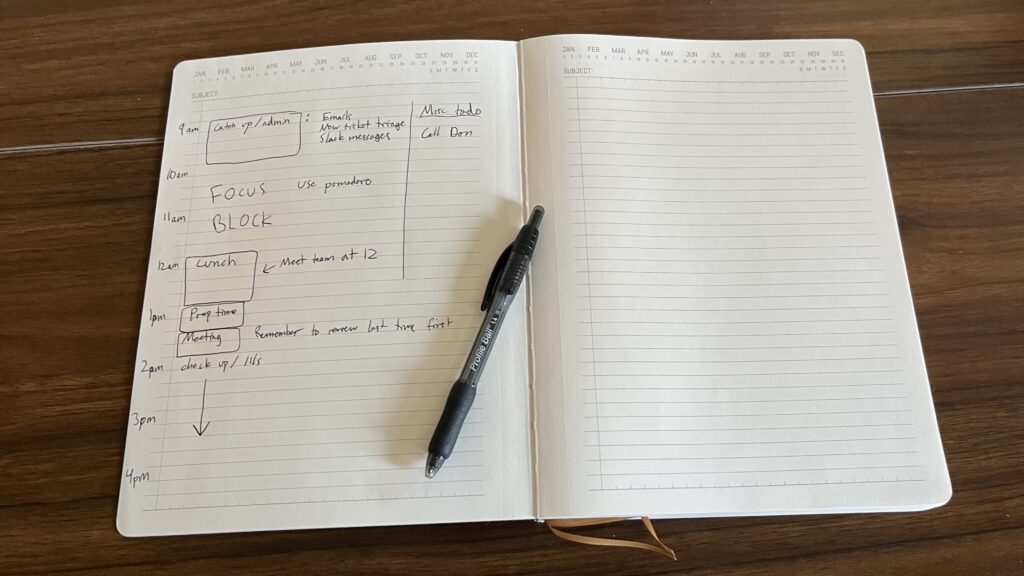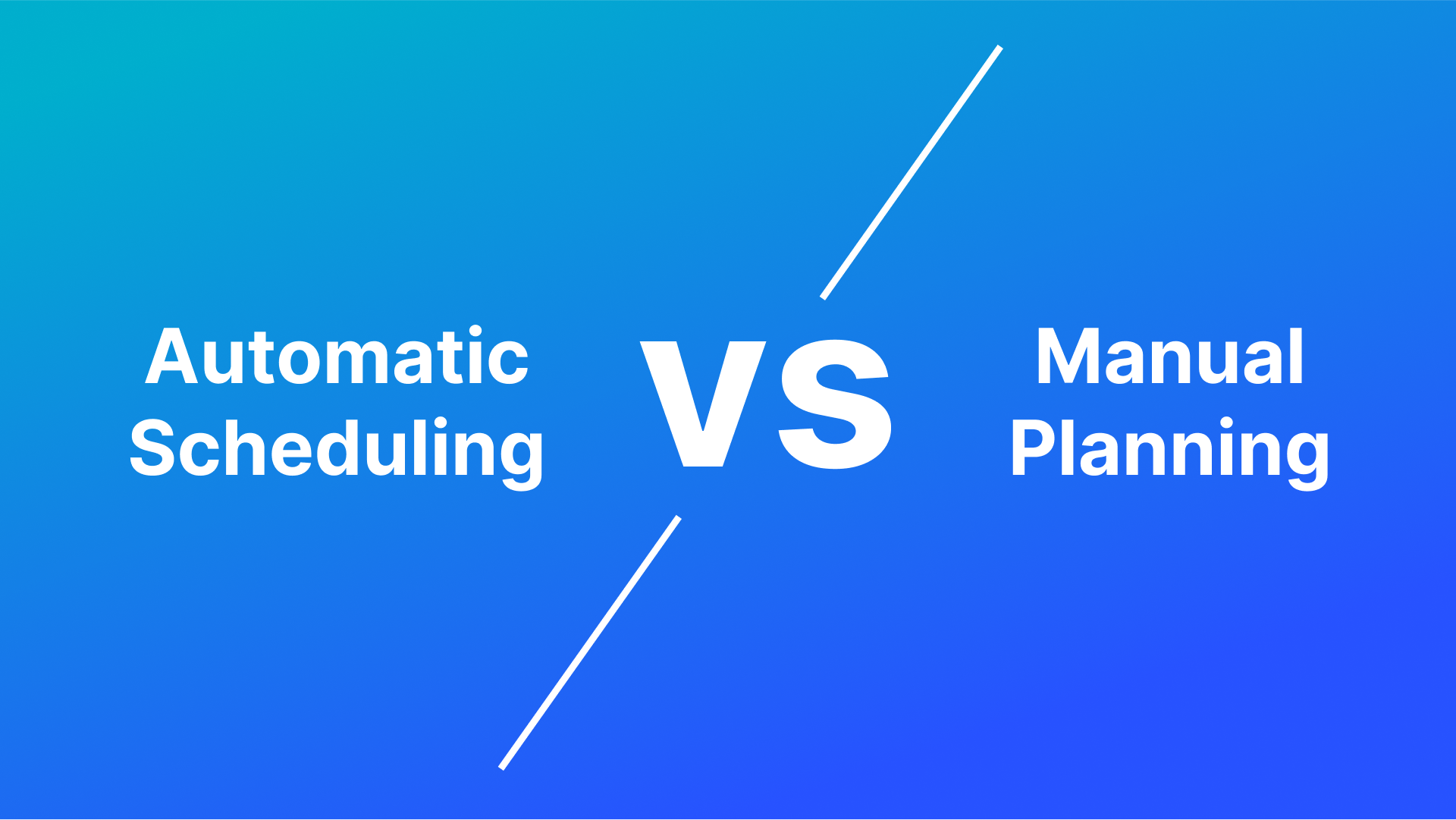Managing time effectively is crucial to achieving personal and professional goals. Whether you’re juggling multiple projects at work, balancing family responsibilities, or trying to carve out time for personal growth, how you plan your day can make a significant difference. Two popular approaches to time management are automatic scheduling and manual planning. But which one is better for you? Let’s dive into each method to help you decide.
What is Automatic Scheduling?
Automatic scheduling is a modern approach to time management that leverages technology to optimize your daily schedule. Apps like FlowSavvy automatically allocate time slots for your tasks based on priority, deadlines, and available time. This method is particularly beneficial for those who have a lot on their plate and need help organizing their day efficiently.
Curious about what makes FlowSavvy the best app for automatic scheduling?
Benefits of Automatic Scheduling
- Efficiency and Time-Saving: One of the biggest advantages of automatic scheduling is that it saves you time. The software does the heavy lifting, analyzing your tasks and finding the optimal time slots for each one. This allows you to focus more on your work rather than spending time planning.
- Flexibility: Life is unpredictable, and plans often change. Automatic scheduling tools can quickly adapt to these changes, re-organizing your tasks and appointments without requiring you to manually adjust everything.
- Less cognitive load: Instead of deciding what to work on next, you can brain dump all your tasks into FlowSavvy, and your automatic scheduling assistant will figure out when everything needs to be done.
- Consistency: With automatic scheduling, you’re less likely to forget tasks or miss deadlines because the system keeps everything organized and visible.
Cons of Automatic Scheduling
- Less Personalization: While automatic scheduling tools are incredibly convenient and time-saving, they may not always automatically capture the unique nuances in how you like to work. To combat this, FlowSavvy allows you to tweak time blocks manually at any time.
- Learning Curve: There can be a learning curve involved in setting up and using these tools effectively. At FlowSavvy, we’re very aware of this drawback to automatic scheduling, which is why we’ve designed FlowSavvy to be as easy to use as possible, while still providing all the tools you need for a sleek automatic scheduling experience.
What is Manual Planning?
Manual planning is the traditional approach to time management. It involves actively scheduling tasks by hand, whether through a physical planner, calendar, or digital app. This method offers complete control over your schedule, which many people find empowering.

Pros of Manual Planning
- Personalization: Manual planning allows you to fully customize your schedule according to your preferences, work habits, and daily routines. You decide what format works best for you.
- Mindfulness and Intentionality: When you manually plan your day, you’re more mindful of your time. This intentionality can lead to better focus and productivity, as you consciously allocate time to tasks that align with your goals.
- Tangible Satisfaction: For many, there’s a tangible satisfaction in physically writing down tasks and crossing them off when completed. This act can boost motivation and provide a sense of accomplishment.
- Simplicity: Manual planning is undeniably more straightforward than any automatic scheduling solution. You choose a time to do something and write it down. Simple.
Cons of Manual Planning
- Time-Consuming: Manually planning your day can be time-consuming, especially if you have a lot of tasks to juggle. This can eat into the time you could be spending on actual work.
- Inflexibility: When plans inevitably change or you get behind, it is incredibly tedious to reorganize your day/week manually. This inflexibility and constant need to re-plan is what usually ends up driving people to use an automatic scheduling app.
- Risk of Overwhelm: Without the guidance of an automated system, it’s easy to become overwhelmed by the number of tasks you need to schedule. You might find it difficult to prioritize effectively, leading to stress and burnout.
Which One Is Better for You?
The choice between automatic scheduling and manual planning ultimately depends on your personal preferences, work style, and the nature of your tasks. Here’s a quick guide to help you decide:
Choose automatic scheduling if:
- You have a busy schedule with many tasks and deadlines.
- You prefer a flexible system that adapts to changes.
- You don’t want to have to constantly decide what needs to be done next.
Choose manual planning if…
- You enjoy the process of planning and find it motivates you.
- You don’t like the idea of an automatic calendar moving tasks automatically.
- Rescheduling time blocks is not a huge pain at your current workload.
Summary
Both automatic scheduling and manual planning offer distinct benefits, making them suitable for different types of people and tasks. Automatic scheduling shines in its efficiency, flexibility, and ability to prioritize, making it ideal for those with busy, unpredictable schedules. On the other hand, manual planning offers a highly personalized, mindful approach to time management, allowing for complete control and a hands-on experience.
If you’re looking to streamline your schedule while still maintaining flexibility and control, FlowSavvy offers the perfect solution. FlowSavvy combines the best of both worlds by automatically scheduling your tasks while allowing for easy adjustments, ensuring that your time is managed effectively, no matter how hectic life gets.

